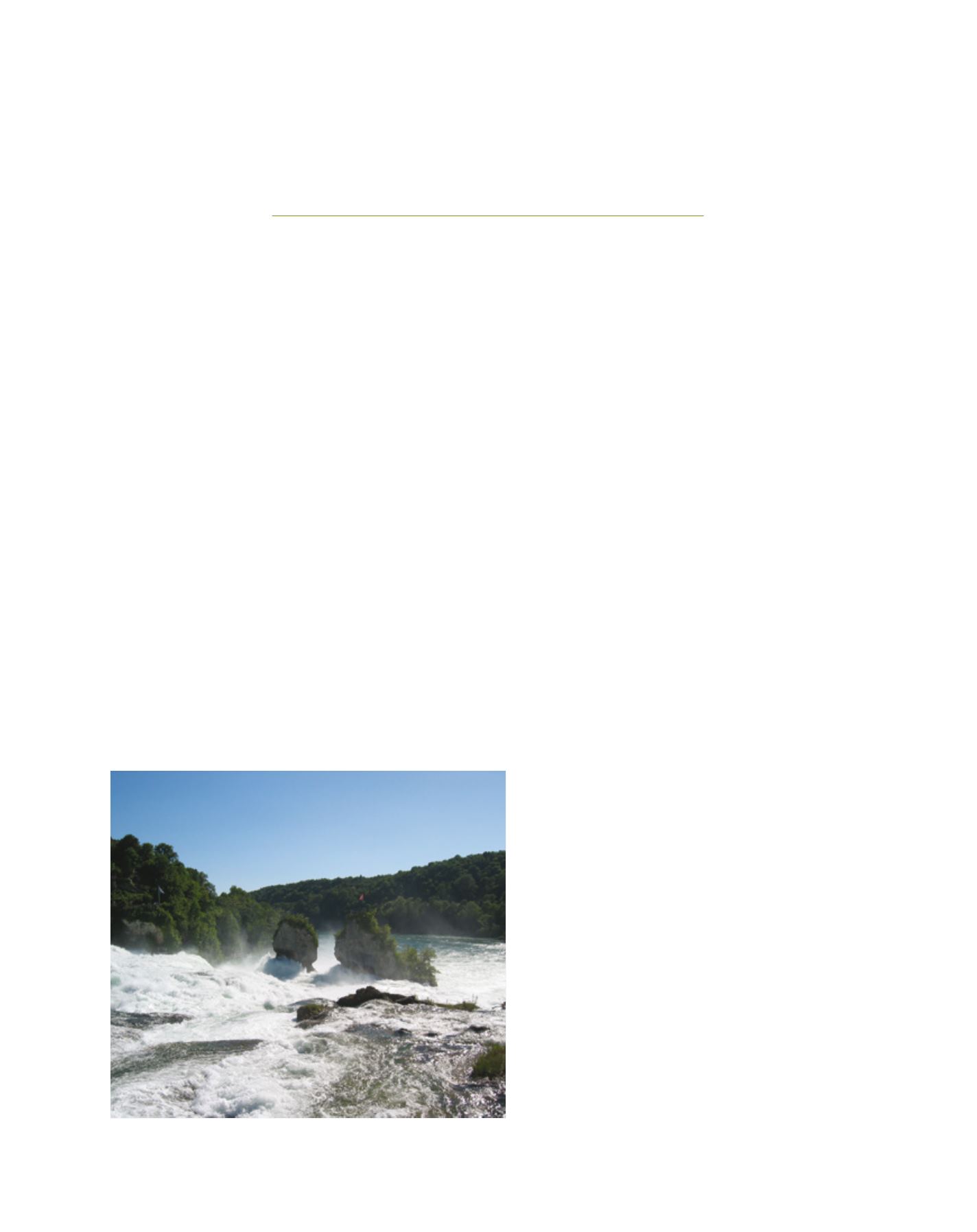

[
] 57
Efficient and effective cooperation in
the River Rhine catchment
Dr J. Cullman, Federal Institute of Hydrology, Germany and Chairperson of UNESCO International Hydrology Programme;
Eric Sprokkereef and Ute Menke, Ministry of Infrastructure and Environment, Rijkswaterstaat-CHR Secretariat, The Netherlands
T
he International Commission for the Hydrology of the
Rhine Basin (CHR)
1
was founded in 1970 by the National
Committees of Switzerland, Austria, Germany, France,
Luxembourg and the Netherlands in the framework of the United
Nations Educational, Scientific and Cultural Organization
(UNESCO) International Hydrological Decade. It is responsible
for carrying out the UNESCO recommendation to strengthen
and to support cooperation in the Rhine catchment area and
other river catchments.
CHR’s mission is to foster knowledge about the hydrology of the
Rhine river basin and to contribute to the solution of transbound-
ary hydrological problems. The commission coordinates diverse
joint researches and often functions as a feedback group. An impor-
tant aspect is the exchange of data, methods and information as
well as the development of standards. CHR has no connections to
politics in the various member states. As a relatively small group,
it can act quite fast, contributing to decision-making processes.
CHR involves mainly scientific institutes focused on the development
and implementation of hydrologicalmeasures to ensure sustainable devel-
opment of the Rhine basin. Activities take place within the framework
of the UNESCO International Hydrological Programme (IHP) and the
Hydrological and the World Meteorological Organization
(WMO) Water Resources Programme. Working alliances
undertake research on various themes such as:
• hydrological interests in water economy and
flood control
• sediment management
• hydrological forecasts and models
• comparison of methods and measuring equipment
• studies on climatic changes and their possible effects
• registration of the interactive relationships between
influencing factors on the hydrological regime of
the Rhine basin.
CHR creates synergy through cooperation in various
studies in the catchment. Its two publication series
focus on the findings of the official CHR working
groups (Series I) and CHR-related work or research
incorporating financial contribution only (Series II).
The Rhine catchment area
The Rhine’s catchment
2
of 185,000 km
2
is home to around
60 million people and comprises nine states includ-
ing a small tip of Italian territory north of Chiavenna,
Switzerland, Liechtenstein, Austria, Germany, France,
Belgium, Luxembourg and the Netherlands. Of the 1,230
km course of the river, a stretch of about 800 km from
Basel to Rotterdam is navigable. This stretch is one of the
busiest waterways in the world, playing a vital role for its
riparians in terms of transporting goods.
The main river and its tributaries supply countless
industrial plants with process water and provide cooling
water for numerous thermal power stations, both nuclear
and fossil-fuel driven. In water-operated power plants or
power plants on reservoirs of the catchment, however,
the power of the streaming water produces a substantial
amount of electricity. Furthermore, the Rhine is a major
supplier of drinking and process water. Stuttgart and other
municipalities in the Neckar region are supplied through
lines from Lake Constance, while numerous other cities
and communities are provided with river bank filtrate. In
the end, the river has to absorb all sewage, albeit cleaned.
Despite these strains imposed by civilization, ‘the romantic
Rhine’ continues to attract tourists from across the world.
For all these reasons, it is crucial to know whether and
how the water levels of the Rhine will change in future. But
T
ransboundary
W
ater
M
anagement
The Rhine fall near the city of Schaffhausen at high discharge, 11 June, 2006
Image: CHR


















